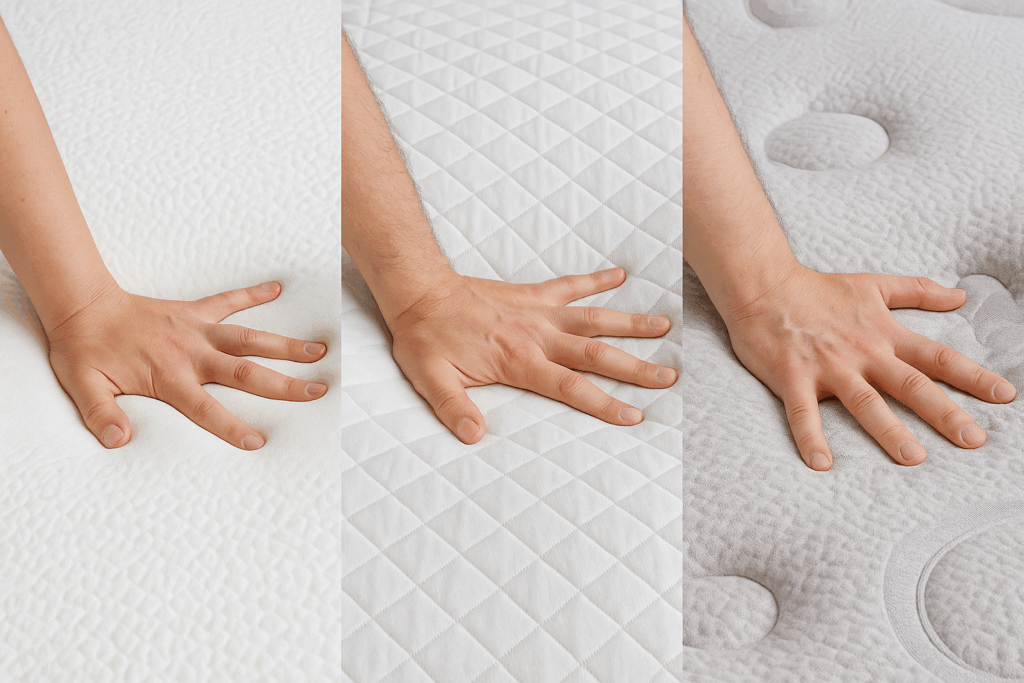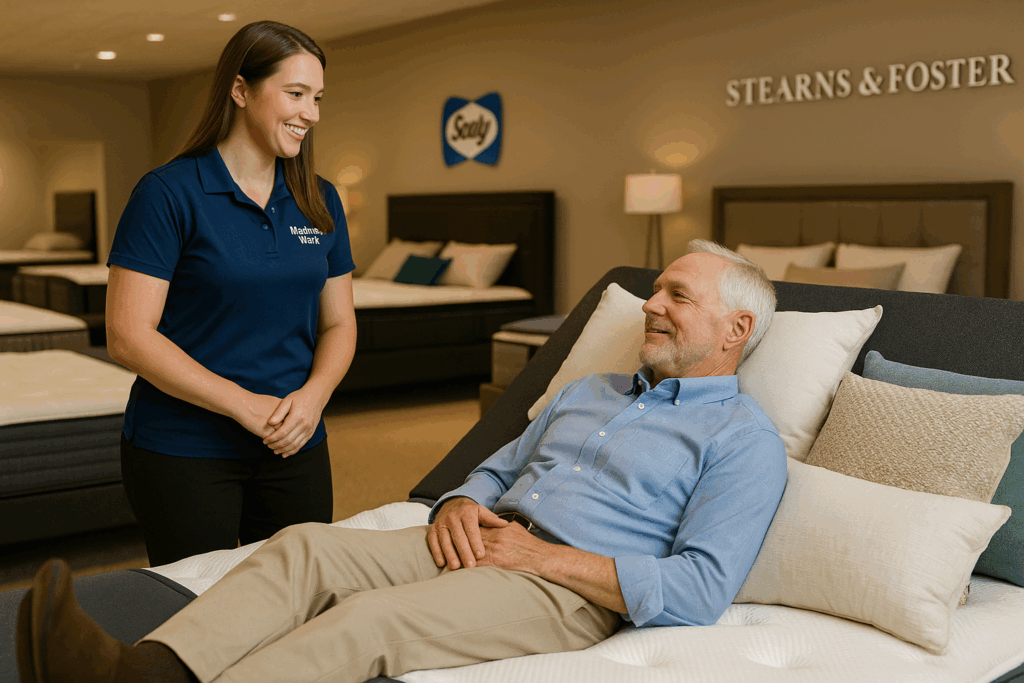
Stop the Maddening Mattress Shopping: Why trying BEFORE YOU BUY matters.
Introduction
If you’ve ever felt overwhelmed trying to buy a mattress online – you are not alone. The convenience of browsing dozens of “bed-in-a-box” models from home sounds great, until you’re hit with endless options, contradictory reviews, and the nagging worry: “Will this mattress actually feel right?” For many shoppers (especially those of us 45 and older), the online mattress boom has turned into a frustrating guessing game. It’s a big decision – a mattress can affect your sleep and health (and MOOD) for the foreseeable future – and the pressure to get it right is huge. While clicking “Add to Cart” is easy, dealing with a mattress that isn’t comfortable and the hassle of returns is anything but fun. That’s why more people are rediscovering an old truth: when it comes to mattresses, trying before buying in a actual store with actual people to help you, can save you headaches and help you sleep easier.
The Online Mattress Boom vs. In-Store Shopping
In the past decade, online mattress sellers have exploded onto the market with the promise of doorstep delivery, sharp pricing, and 100-night trials. It’s a persuasive pitch—yet for shoppers the trade-off is often information overload with every company saying and offering the same promises, a mattress that is just right for everyone, and yet offer zero tactile feedback before purchase. You are relying on a description written by (what may now be AI) and the reviews of people who may, or may not be, real.
In a showroom, by contrast, you can compare firmness side-by-side by lying down in your usual sleep position, and assessing edge support instantly.
- Convenience: Online wins for 24 / 7 ordering in your underwear; Retail stores win for real-time, sensory feedback.
- Price transparency: Web prices are fixed, while brick-and-mortar prices can sometimes be negotiated and may include extras (old-mattress removal, pillows, protectors, free delivery, etc…).
- Demographic fit: Fewer than 30 % of shoppers aged 56 + buy mattresses online—most still trust physical showrooms.
Why do many shoppers still go to stores? Because sinking into a mattress for a few minutes gives immediate feedback that no webpage can provide. You can feel the firmness, gauge the support on your back or hips, and compare several beds side by side. For those of us with specific needs – say, back pain or arthritis – this “try before you buy” approach is more than just peace of mind; it’s often the quickest path to finding a comfortable match. As one industry expert put it, “actually lying down on a mattress is still the best way to find the right one.”
Does Trying Before Buying Improve Satisfaction?
A resounding YES—consumer research shows a strong link between in-store testing time and long-term satisfaction. Shoppers who spend as little as 5 minutes lying on a mattress report significantly higher “sleep comfort” scores a year later. Meanwhile, generous home-trial policies for online brands are popular but also signal that returns are expected: some web-only companies see return rates of 20 % or more, versus under 5 % for traditional retailers. Ordering a mattress online means you won’t know if the mattress fits you until you’ve slept on it.
That means you’re roughly four times more likely to send a mattress back when you buy sight unseen. Fewer returns = fewer headaches and faster, sounder sleep.
Return Rates and the Hidden Environmental Cost
Mattress returns aren’t just a hassle—they’re an ecological problem. Once opened, most mattresses cannot be resold as “new.” Although many companies arrange donation or recycling, a substantial share still ends up in landfills or incinerators. Americans discard an estimated 20 million mattresses every year, and fewer than one in five is fully recycled.
Each return doubles the carbon footprint: manufacturing, initial shipping, reverse logistics, plus disposal or recycling energy. By choosing wisely the first time—often best accomplished by testing in person—you reduce waste and emissions in a single stroke.

Comfort, Convenience, and Cost: Weighing In-Store vs. Online
- Comfort & Fit (Showroom): Immediate, sensory feedback; couples can test together for motion isolation.
- Convenience (Online): No driving, no store hours, mattress arrives compressed on your doorstep.
- Price: Web prices average lower initially, though in-store promotions and negotiation can narrow the gap.
- Return friction: Online returns are usually free pickups; stores vary, sometimes charging restocking fees.
- Expert advice: Knowledgeable staff in-store vs. FAQ pages and chatbots online—choose the help style you prefer.
The ideal route may be hybrid: research online to narrow the field, then visit a showroom to confirm the feel—or vice versa.

Quick Checklist: Questions to Ask Before You Buy
- What’s the length of the sleep trial and are there fees for returns?
- Will the retailer remove your old mattress, and at what cost?
- How long is the warranty and what exactly does it cover?
- Is professional setup available?
- For couples, how well does the mattress isolate motion?
Conclusion: Making the Confident Choice
Online shopping excels in speed and convenience, yet showroom testing dramatically cuts return rates, boosts long-term satisfaction, and curbs landfill waste. If you’re 45 + and crave certainty, investing an hour to stretch out on five or six mattresses may be the fastest route to years of comfortable, pain-free sleep. Whether you end up purchasing in store, online, or through a hybrid approach, the best mattress is the one you can trust to feel right before it arrives at your door.

